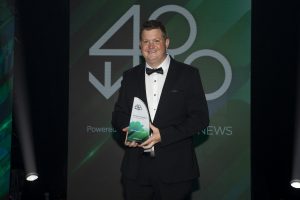
Harnessing the power of biology in horticulture
24 May 2021
Offering disease control and value to vegetable growers
24 May 2021In this column, Cameron Scadding (pictured) – co-founder and Managing Director of Perth-based science technology company Source Certain International – explains how scientific provenance verification is breaking a path in a sector previously dominated by digital technology.
What made you pursue this kind of technology?
Our scientific technology, TSW Trace® was pioneered in the 1970s by Source Certain International Chief Scientist, John Watling. Nicknamed ‘gold-fingerprinting’, it was used extensively to identify the provenance of stolen gold and link it back to its mine of origin. It was trusted by law enforcement and accepted by the legal world, and I knew there was potential for it to be a transformative tool in the supply chain space.
What fruits and vegetables have you had experience in verifying?
We have used our scientific technology to analyse a whole suite of fruit and veg; from potatoes to cabbages and citrus to avocados. The science is applicable to all food products with environmental origins, which influence their chemical make-up.
Can you explain how TSW Trace® works?
TSW Trace™ identifies the chemical, molecular, elemental and isotopic indicators that are absorbed into plants, animals and minerals from their natural environment. The analytical result is used to develop a chemical fingerprint that is representative of the product’s provenance (its source of origin). We store these fingerprints in a Provenance Database that can be referenced to confirm the discrete origin of a product once it enters the supply chain.
What sets it apart from other competitors in the market?
We’ve spent over 40 years developing, refining and using our technology. We also analyse a combination of indicators (trace metals, isotopes, chemicals and elements), which gives us a very precise indication of origin – we are able to distinguish between individual farms, fisheries, plantations, chook sheds andorchards.

Cameron Scadding pictured receiving his 2021 Business News 40under40WA award that recognises the state’s innovators and future business leaders. Image courtesy of Business News, Matt Jelonek and John Koh.
Consumers care about where their food comes from. How does provenance verification play a part in this?
Verifying ‘country of origin’ just isn’t enough anymore. Consumers make purchasing decisions on the value claims associated with food and products – organic, sustainable, free range, ethical – and these values are implemented at the farm, shed or orchard level of production, making it so important to have a technology in place that can verify provenance to that level of precision, in turn verifying those claims.
How does scientific analysis differ from digital solutions and smart printing techniques?
Because we’re scientists and we analyse physical specimens, we say the most effective way to prove if a product is what it says it is, is to strip away the packaging and test the product itself. However, we work alongside complementary service providers as we each offer a unique layer of security to high-value products.
Can TSW Trace® be used in a biosecurity and contamination sense?
Our technology offers enhanced traceability to combat food safety issues by linking produce at the packhouse stage to the farm of origin. There are biosecurity benefits, with a tighter quarantine and continuation of operations that comes with the ability to trace a contaminated vegetable back to a farm.
In addition, our technology provides a solution to the growing demand from downstream suppliers to verify the authenticity of premium produce; boutique or licenced varieties; sustainability or organic production claims; and other provenance-based claims.
Find out more
Please contact Source Certain Head of Sales Nathan Dubrich at nathan.dubrich@sourcecertain.com or visit the Source Certain website.

